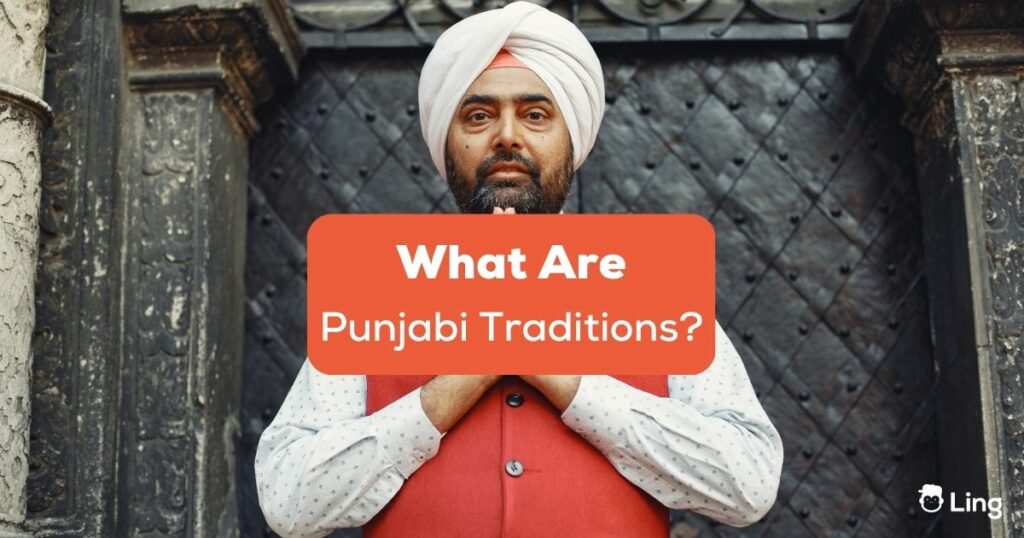Hey there! Let me tell you about a time when I finally got the answer to my perennial question – what are Punjabi traditions? I was at a friend’s wedding, and the groom’s family had organized a jaago ceremony the night before the wedding. Now, for those of you who don’t know, a jaago (ਜਾਗੋ) is a party where people stay up all night, dance, sing, and celebrate. And boy, do Punjabis know how to party!
The highlight of the night was when the groom’s mother brought out this giant pot filled with milk, sugar, and spices. She placed a lit diya (ਦੀਆ – oil lamp) on top and started to stir the mixture while singing a traditional Punjabi song. The rest of us joined in, clapping and dancing around the pot. It was like a scene straight out of a Bollywood movie!
This experience got me thinking about all the other Punjabi traditions that make the culture of Punjab so unique and vibrant. So, in this article, I’m going to share with you some of the most fascinating Punjabi folklore and traditions that have been passed down through generations. Are you ready to learn? Let’s go!
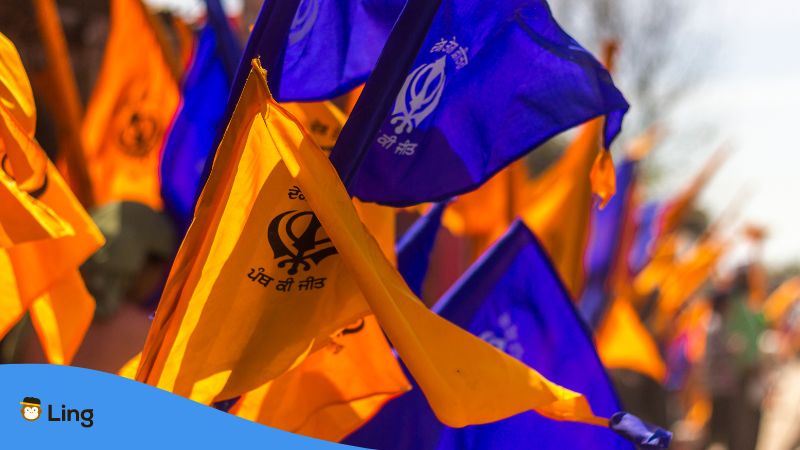
What Are Punjabi Traditions?
Tradition refers to a set of customs, beliefs, practices, and values that are passed down from generation to generation within a particular community, society, or culture. It encompasses a range of rituals, behaviors, and symbols that are considered significant and meaningful by those who observe them and are often integral to a group’s identity and history.
In the same way, Punjabi traditions are a rich and colorful reflection of the state’s history, culture, and people. From the lively music and dance to the delicious food and vibrant clothing, from the soulful Sufi music to engaging Punjabi literature and Punjabi poetry, Punjabi traditions are a feast for the senses. Let’s take a look at some of the high points of the culture of Indian Punjab.
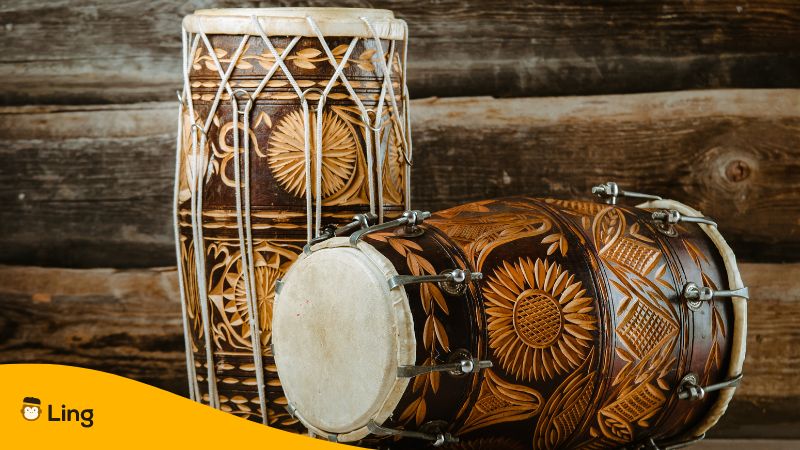
#1 Celebrations (Jaśana – ਜਸ਼ਨ)
Punjabi people know how to celebrate life and all its milestones. Weddings, festivals, and other special occasions are marked with joyous folk music, dance, and feasting. Whether it’s the high-energy folk dances like Bhangra (ਭੰਗੜਾ) or the graceful Giddha (ਗਿੱਧਾ), the lively beats of the dhol drum (ਢੋਲ), or the melodious voice of a Punjabi singer, celebrations in the Punjab province are always filled with folk music and Punjabi dances.
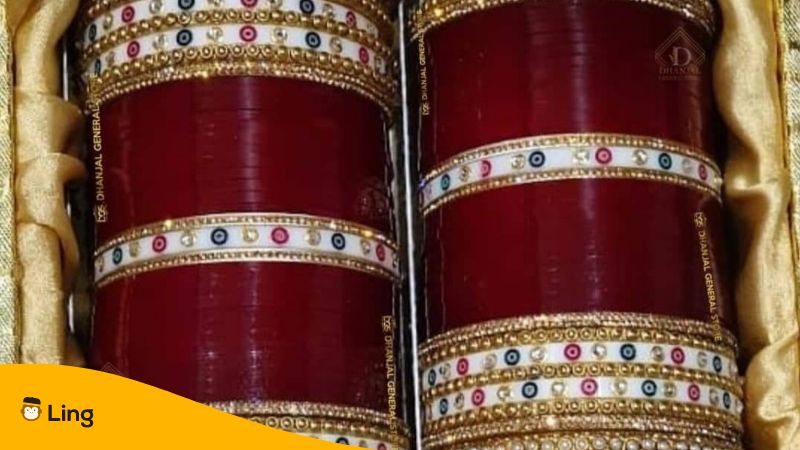
#2 Festivals (Ti’uhāra – ਤਿਉਹਾਰ)
Punjab is home to a variety of festivals that are celebrated with great enthusiasm and zeal. The winter festival of Lohri (ਲੋਹੜੀ) is marked by bonfires, traditional food, and music. Vaisakhi (ਵਿਸਾਖੀ), the harvest festival, is celebrated with religious ceremonies and community gatherings. Diwali (ਦੀਵਾਲੀ), the festival of lights, is a time for family reunions and feasting.
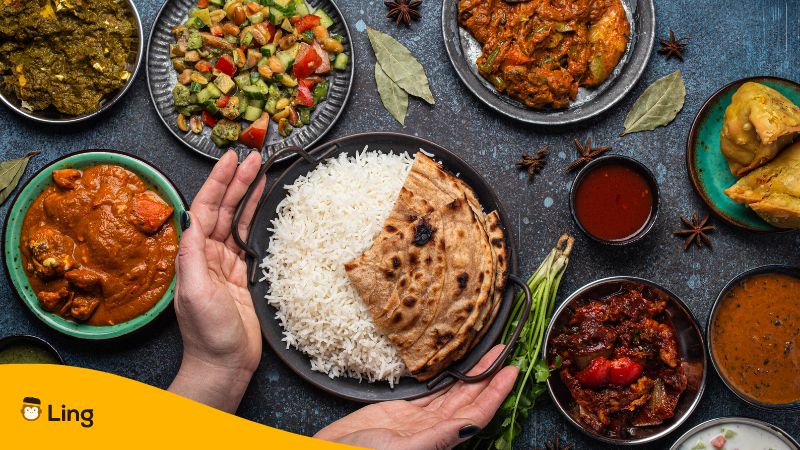
#3 Food (Bhōjana – ਭੋਜਨ)
Punjabi cuisine (Pakavāna – ਪਕਵਾਨ)is famous for its rich, spicy, and flavorful dishes. From buttery naan, creamy dal makhani, and butter chicken to the tangy achaar (Indian pickles) and spicy chole, Punjabi food is a treat for the taste buds. The state is also known for its popular fares such as tandoori chicken (skewered whole chicken cooked in a clay tandoor) and makki ki roti (flat unleavened corn meal bread) served with sarson ka saag (mustard greens gravy). There’s also chole bhature (chickpea curry with deep-fried leavened sourdough bread), and the mouth-watering tikki chaat (crispy fried potato patties mashed with yogurt, spices, and sweet and tangy chutneys).
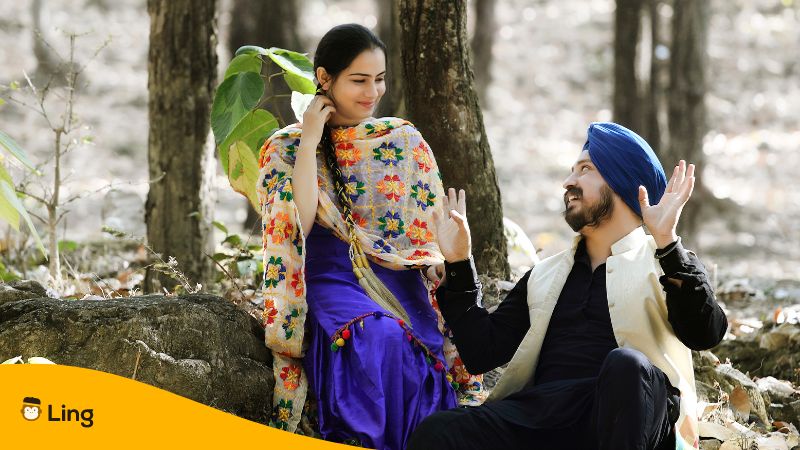
#4 Clothing (Pahirāvā – ਪਹਿਰਾਵਾ)
Punjabi clothing is vibrant and colorful, reflecting the state’s rich cultural heritage. The traditional attire for men is the kurta pajama (long shirts or tunics with traditional pants), while Punjabi women wear the traditional dress of the salwar kameez or the Patiala suit. The intricate embroidery work on dupattas (long stoles) and shawls is a testament to the skill and craftsmanship of Punjabi artisans.
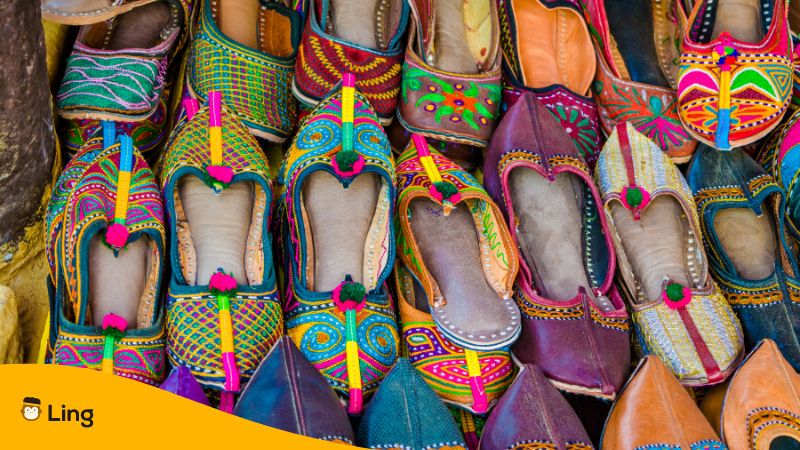
Impact Of Sikhism On The Culture Of Punjab
The Sikh religion (Sikh Dharama – ਸਿੱਖ ਧਰਮ) has had a significant impact on Punjabi traditions, as it originated in Punjab and is deeply rooted in its culture and history. Sikhism, founded by Guru Nanak Dev in the 15th century, is based on the principles of equality, justice, and service to humanity.
One of the most visible impacts of Sikhism on Punjabi traditions is the emphasis on the turban (Paga – ਪੱਗ), which is an important symbol of the faith. Men from the Sikh community wear the turban as a sign of their commitment to the faith and to protect their uncut hair, which is one of the five articles of faith.
Sikh Gurus have also influenced Punjabi traditions through their teachings on community service and charity. The traditional practice of langar (ਲੰਗਰ), a communal meal served in Sikh temples or gurudwaras (ਗੁਰੂਦੁਆਰਾ) to people of all religions and backgrounds absolutely free of cost, is a prime example of this. The tradition of langar promotes equality and the spirit of sharing, and is an integral part of Sikhism.
Another impact of Sikhism on Punjabi traditions is the concept of kirtan (ਕੀਰਤਨ), which refers to the singing of hymns and devotional songs. Kirtan is an essential part of Sikh worship and has influenced the music, dance forms, and culture of Punjab. In many Punjabi households, be they Sikh or Hindu, any auspicious event is marked with a kirtan, wherein people gather at the host’s home and sing devotional songs for hours on end.
The Sikh religion has played a significant role in shaping the Punjabi language and traditions and has had a profound impact on the state’s culture, history, and identity.
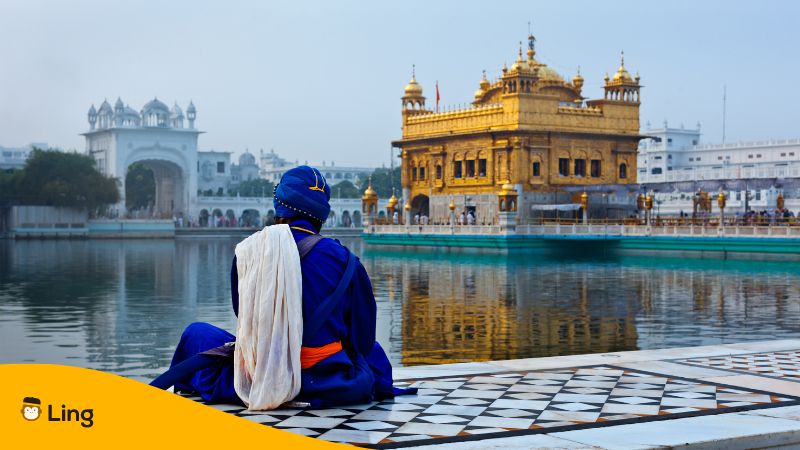
Traditions Of Punjab: A Reflection Of Its Cultural Ethos
Here is a list of some popular Punjabi traditions:
- Panj Kakar (ਪੰਜ ਕੱਕੜ): These are the five articles of faith that form an important part of the Sikh identity – Kesh (uncut hair), Kangha (a wooden comb), Kara (a steel bracelet), Kirpan (a sword), and Kachera (cotton undergarments). The 5 Ks represent the commitment of a Sikh to live a disciplined and principled life. They also symbolize the values of courage, compassion, and equality that are central to Sikhism.
- Jugani (ਜੁਗਨੀ): A traditional form of Punjabi music that involves singing and storytelling. It is often performed by wandering minstrels, who travel from village to village spreading messages of love, peace, and harmony.
- Karva Chauth (ਕਰਵਾ ਚੌਥ): A festival marked by the Hindu calendar and celebrated by married women by fasting for their husbands’ well-being and longevity.
- Hola Mohalla (ਹੋਲਾ ਮੁਹੱਲਾ): A three-day Sikh festival that takes place annually in the month of March. It is in the town of Anandpur Sahib, where Nihang Sikhs gather to display their martial skills and hold processions. It is a time of communal harmony and solidarity among Sikhs.
- Bandi Chhor Diwas (ਬੰਦੀ ਛੋੜ ਦਿਵਸ): A Sikh festival celebrated on the day of Diwali to commemorate the release of the sixth Sikh Guru, Guru Hargobind Sahib, from Mughal imprisonment, in 1619. The festival is celebrated with lights, fireworks, and kirtan at the Golden Temple. It is a time for reflection, forgiveness, and freedom.
- Kushti (ਕੁਸ਼ਤੀ): A traditional form of wrestling popular in Punjab that involves rigorous training and strict adherence to a code of conduct. Kushti wrestlers, known as pehalwans, are highly respected in Punjab.
- Chooda (ਛੁਡਾ ਦੀ ਰਸਮ): A pre-wedding ceremony where the bride-to-be is given a set of red and white bangles to wear for the duration of her marriage.
- Phulkari (ਫੁਲਕਾਰੀ): A traditional form of embroidery done on shawls, dupattas, and other clothing items. It is one of the best possible reflections of the Punjabi art.
- Jutti (ਜੁੱਤੀ): A traditional footwear popular in Punjab. It is a flat, slip-on shoe made of leather or other materials and is often embroidered or embellished with beads and sequins, and completes the traditional dress ensemble for both men and women.
- Langar (ਲੰਗਰ): A free-of-cost, communal meal served in gurudwaras to people of all religions and backgrounds.
Learn More About Punjabi Culture With Ling
Punjabi traditions are a celebration of life, music, dance, food, and culture. They bring people together, create lasting memories, and showcase the rich history and heritage of both East Punjab and West Punjab. And if you are left mesmerized by the beauty of such traditions, you can make your way to the Ling platform to gobble more such information.
The Ling app is the best when it comes to combining various linguistic techniques and modern technology to provide the language learner with a unique and fulfilling experience. With its gamified interface, interactive exercises, and a series of fun quizzes, you are bound to make quick progress regarding your fluency, reading, and writing skills.
So, without wasting much time, go to your Play Store or App Store and download the Ling app for free now!
